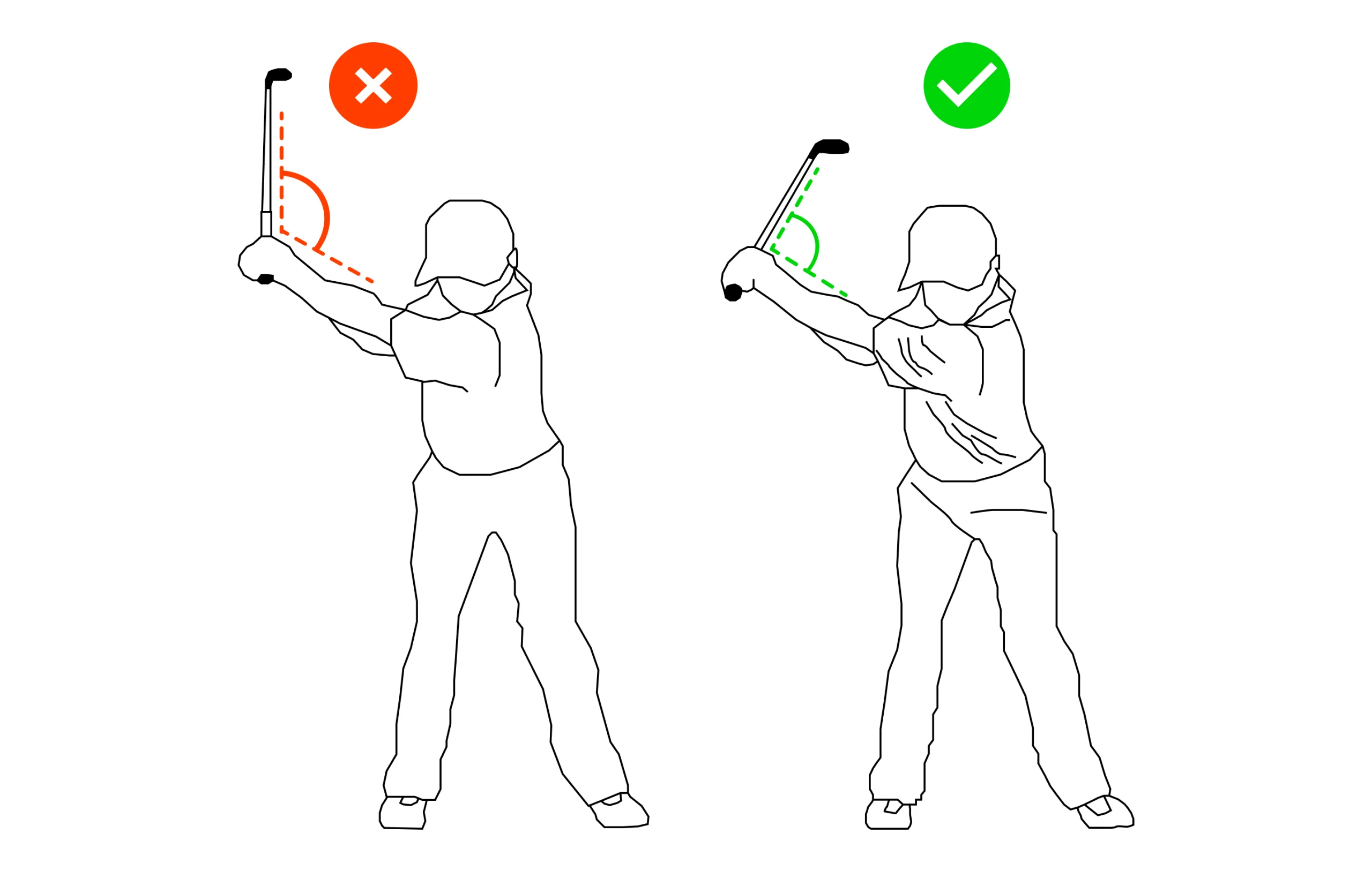
Limited wrist hinge in golf backswing diminishes power and accuracy. It prevents efficient energy transfer, resulting in shorter drives and inconsistent shots. Proper hinging creates a wider swing arc and better clubface control, crucial for distance and precision.
Alternate names
- Flat Wristed Backswing
- Stiff-Wristed Backswing
Causes of Lack of Wrist Hinge in Backswing
A lack of wrist hinge in the golf backswing can have a significant impact on your swing and overall performance. Following are some of the possible causes:
Golf Technique Deficiency
Grip Pressure: A very tight grip can restrict wrist movement, preventing the natural hinging action.
Incorrect Takeaway Path: If the club is taken too far inside or outside the intended swing plane early in the backswing, it disrupts the natural flow of the swing, making it difficult for the wrists to hinge correctly.
Lack of Body Rotation: When the arms are used to lift the club without proper rotation of the shoulders and torso, the wrists tend to remain stiff and passive, hindering the hinging motion.
Drills to Fix the Issue
Wall Wrist Hinge Drill
Reinforces proper vertical wrist hinge and discourages pulling the club too far inside during takeaway.
- Stand with your trail (dominant) side towards a wall, about one club length away.
- Take your normal grip and address position.
- Begin a slow backswing.
- Hinge your wrists to lift the clubhead upward.
- Avoid touching the wall — this means you’re hinging vertically, not dragging the club behind you.
🎯 Goal: Improve takeaway by training a clean, upward hinge without pulling the club inside early.
Hinge and Hold Drill
Trains consistent wrist hinge retention throughout the backswing and into the transition.
- Set up in your regular golf stance.
- Hinge your wrists early — at any comfortable point in the takeaway.
- From that hinged position, continue your backswing as usual.
- Maintain the hinge as you complete the swing, focusing on control and structure.
🎯 Goal: Build wrist awareness and prevent early unhinging for a more stable, repeatable swing.
Physical Limitations Contributing to the Error
Limited Wrist Mobility: Restrictions in wrist flexibility, due to previous injuries, arthritis, or general stiffness, can make it difficult to achieve the desired wrist hinge.
Forearm Tightness: Tightness in the forearm muscles can also restrict wrist movement.
Shoulder Restrictions: Shoulder mobility is also very important in the golf swing. If there are shoulder restrictions, it can cause compensation within the swing, that limits the wrist hinge.
Age and General Stiffness: As people age, they naturally lose some flexibility, which can affect their ability to perform the proper wrist hinge.
Exercises to Build Movement Capacity
Wrist Flexor/Extensor Stretch – Improve mobility and range
Wrist Curls/Extensions – Strengthen muscles supporting hinge
Shoulder CARs (Controlled Articular Rotations) – Improve fluidity of arm and wrist movement
How to Adapt Your Swing to Physical Limitations
- Use a shorter backswing if hinge is difficult, focusing on tempo
- Add a slight early hinge in takeaway to pre-set wrist angle
- Use lighter shaft or grip to reduce resistance and tension
Related Swing Errors
Precursor Errors (Triggering Issues)
- Excessive Grip Pressure
- Flat Shoulder Turn
Successor Errors (Resulting Issues)
- Early Release or Casting
- Loss of Lag
- Inconsistent Contact
Tools and Training Aids
- Hinged Training Club – Helps feel and time wrist set
- Swingyde or Wrist Trainer – Gives instant hinge feedback
- Mirror or Video App – For visual wrist angle feedback
